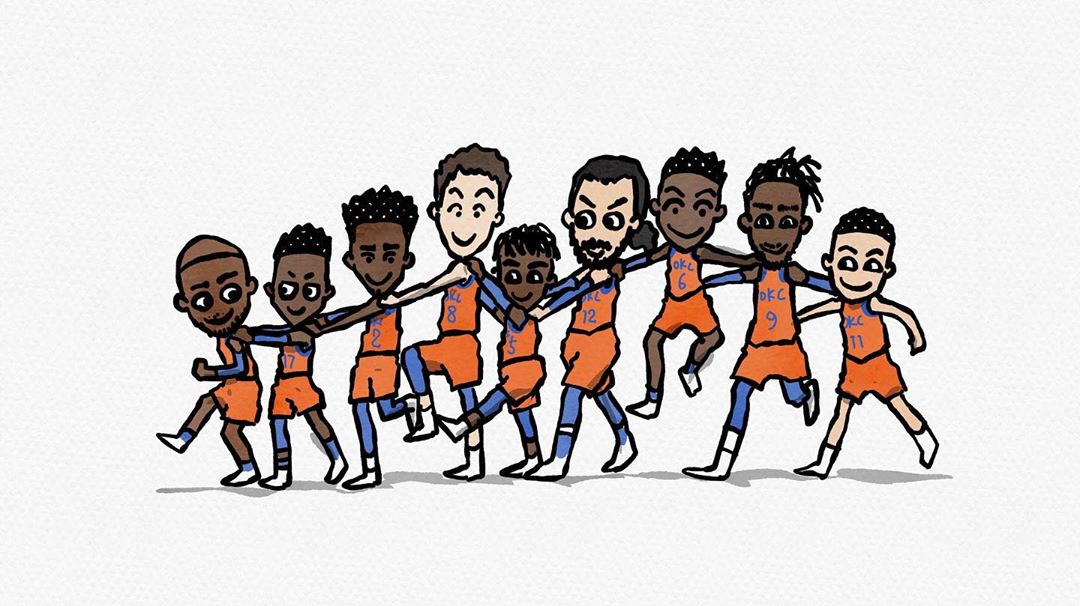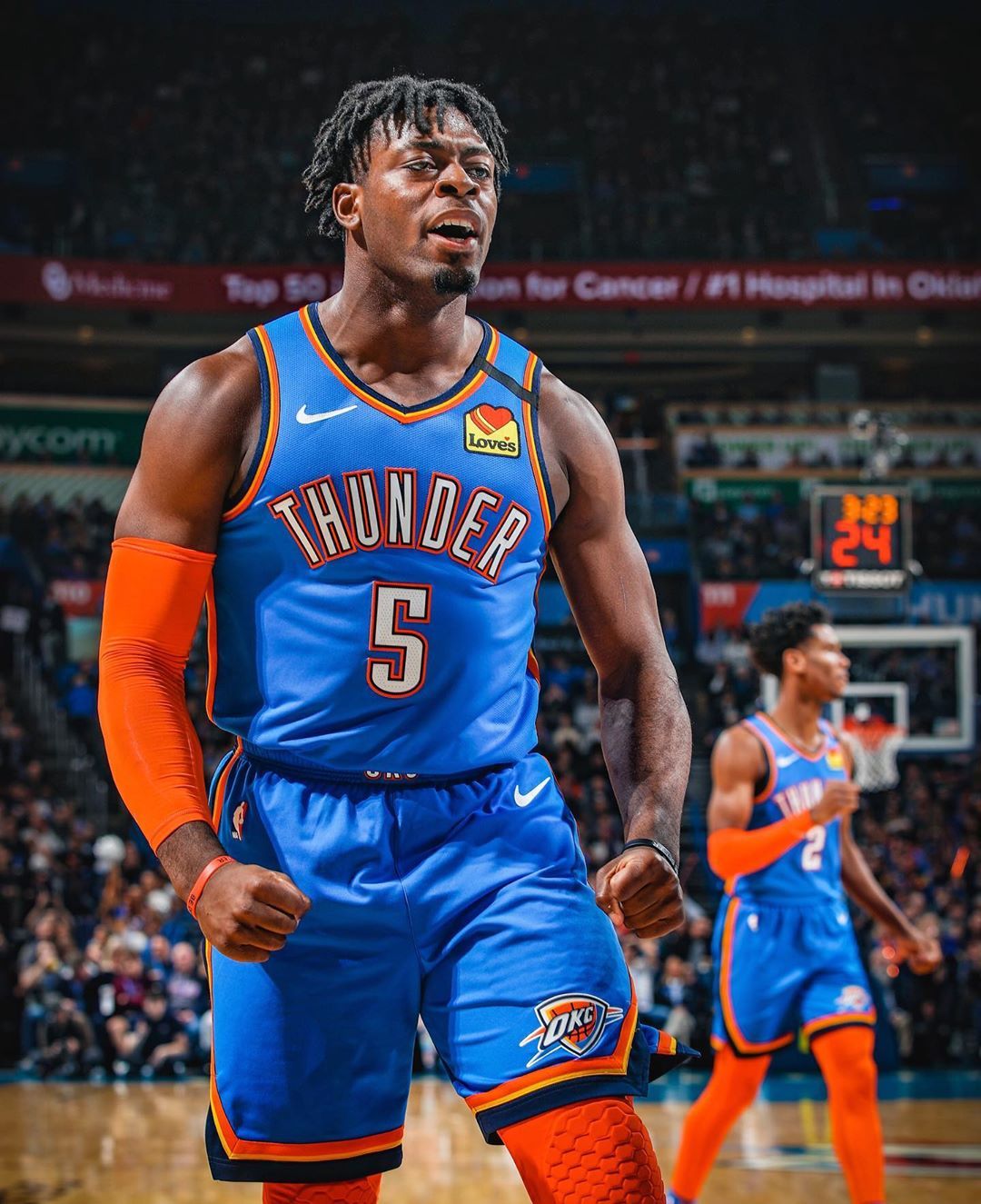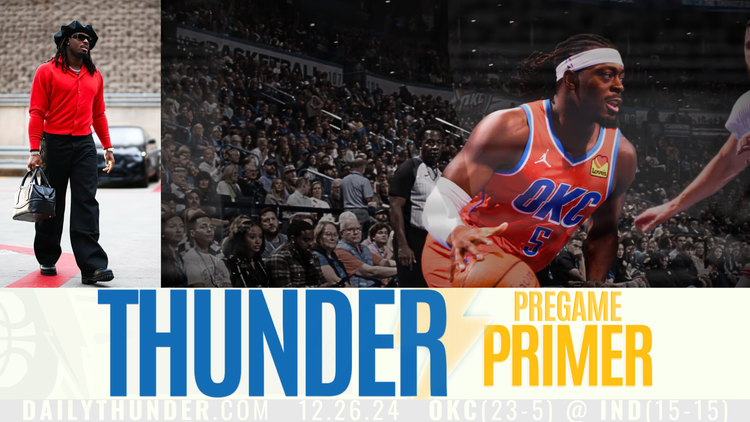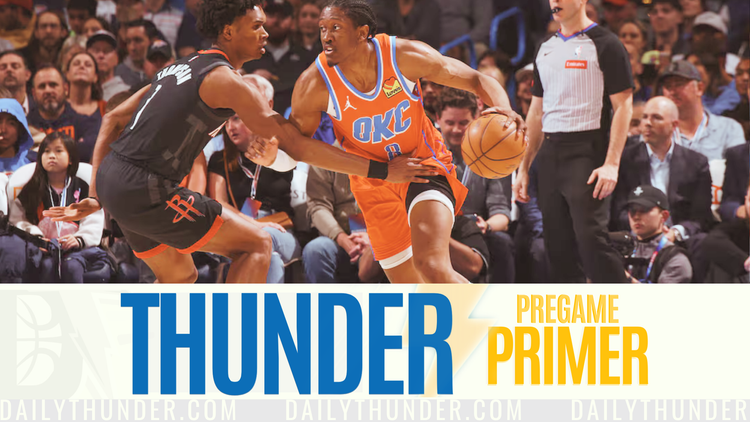45 Days of Dort

Luguentz Dort has taken the Thunder world by storm, hopping from the G League to the Thunder starting lineup in a blaze of tantalizing defense and scintillating memes. He’s done all of this on a two-way contract, an uncommon but not unheard of arrangement for a breakout rookie. Many fans are (understandably) confused by his situation, which I’ll try to clarify below.
What’s a two-way contract?
For a full breakdown of how two-way contracts function, I recommend reading HoopsRumors’ glossary entry. In short, it’s a temporary deal that doesn’t count against the Thunder’s 15-man NBA roster or salary cap for the season.
It allows a team to hold the rights to a player they are developing in the G League while also getting them experience with the big club. But there’s a limit: only 45 days can be spent “with the team” at the NBA level. After that, the team must stash the player for the remainder of the season in the G League, or award them a standard NBA contract.
2Travel arrangements used to be included as “with the team” before the league simplified the rules. Now, a day is only accumulated if the player on a two-way spends time practicing with other players or active on the roster for a game.
When will Dort’s 45 days run out?
The league requires teams to internally track and report their 45-day tallies. It does not require them to share that reporting with us.
So only the Thunder organization knows how many practices have been logged by Dort, and they ain’t telling. OKC (like most all franchises) doesn’t disclose that information to the public. They declined Daily Thunder’s request for insight into Dort’s ticking clock.
All we can know for sure is the number of games Lu Dort has been active for NBA games. Since he’s suited up for 22 contests, the absolute maximum remaining days on his 45-day deal would be 23. But that doesn’t account for practice days with the Thunder.
Couldn’t we guestimate?

The media does not view the actual Thunder practice sessions, so there is no way to even take notes on whether Dort was a participant or not from day to day. Under the rules, Dort can be present at practice, but as long as he doesn’t engage in activities with other players, he’s not considered a practice participant for that day. Billy Donovan did reveal that Dort has typically not practiced with the Thunder since joining the rotation, so we might assume that he isn’t imminently close to running out of days.
Why haven’t the Thunder already signed him?
The usual answer here would be because they genuinely do not yet consider the player to be NBA material. That seems very unlikely in Dort’s case, but the team really does use the time allotted to evaluate players before spending a roster spot on them. Most 45-day contract players around the league do not get the proverbial pot of gold at the end of their G League/NBA hybrid rainbow. If opposition scouting and/or a regression in his play brought Dortmania crashing to the ground after 25 games, the Thunder would have been foolish to convert him before gathering all information possible.
One other reason would simply be precedent. A front office has to negotiate with player agents and hunt every last edge in building a quality NBA roster. Handing out early conversions from 45-day to full deals could cause diminish their overall strength and leverage, however subtly.
The most pressing factor for the Thunder is just how crammed their cap sheet remains for 2019-20. They have 14 guaranteed contracts on the books, and Dort would make 15. Which means they will have to waive and eat another player’s salary if they also made an addition via the buyout market. They’re also still above the tax line, so Dort’s new salary would add to their tax bill, in addition to the increased salary for the roster.
They do have the power to unilaterally convert Dort’s two-way deal into a single-year minimum contract. However, minimum contracts pro-rate, so even if they wanted to give up the chance to have him under team control for a longer stretch (highly unlikely) they would wait until later in the season to minimize the tax repercussions.
2Lastly, it takes two to tango. The Thunder have almost surely engaged Dort’s agent in contract talks plenty. They might be at a standstill, or they might have a handshake in place for a deal they’re both happy to enter into on the other side of his 45 days.
So could the Thunder fudge the numbers to get more time out of Dort?
Not really. Sure, most of the witnesses to practice and keepers of the tally are on the Thunder payroll, and therefore liable to conspire to the team’s benefit in the tin-foiled mind. They are also professionals, with reputations and careers built on navigating a complicated league under immense scrutiny.
And one witness is Dort himself, who has an agent whose job it is to maximize Dort’s value and earnings. Rest assured, if Dort and his representation thought the Thunder were extending him beyond the rules to take money out of his pocket, it wouldn’t last.
What kind of deal will Dort get?
An undrafted player calls for a much more open-ended–if not more lucrative–contract negotiation than a player selected in the first round does. First rounders have scaled salary numbers determined in the CBA, not at the negotiation table
3. That’s not the case for players like Dort.
As a team over the cap and tax line, the Thunder must sign Dort into an exception just like they would another free agent. The minimum exception ($1,445,697) and taxpayer midlevel exception ($4,097,436 remaining for the Thunder to use) set the floor and ceiling for what Dort would receive in any deal with OKC.
OKC will likely offer Dort multiple years at or near that minimum value.
4He’ll probably take some variation of that.

What happens if he isn’t signed at all this season?
When the 45 days are used up, the contract does not expire. It remains in place for the season (unless the team waives it), but at that point Dort must only play and practice with the G League team unless he is converted or signed to a standard NBA contract. Essentially, if the Thunder and Dort can’t come to an agreement, he’ll remain under their control and enter this summer as a restricted free agent. Our friend Jon Hamm covered the worst-case scenarios along these lines in a tweet thread.
Danuel House is an example of how a no-brainer conversion temporarily stalled out because of what feels like marginal differences. The Rockets desperately needed wings to fill rotation slots in 2018-19, and House had emerged similarly to Dort–cracking and fitting with Houston’s starting lineup out of nowhere. Of course, Tilman Fertitta has a lot less plausible deniability as a tax dodger than Thunder ownership
5, and it’s reasonable to expect that to be less of a factor now that they have crossed this season’s deadlines for trades and guarantee dates that would have spared them those penalties.
Why is the lowest rung of the cap sheet so complicated?
The start to an NBA career for non-draftees is fragile. Every player believes in themselves, but without the right opportunity to prove their ability they can be headed overseas in short order. Even G League roster spots can be ultra competitive, let alone one of the handful of open roster spots at the NBA level. While there are plenty of cap intracticies affecting players at higher salary levels, there isn’t the same dance; as established talent, the primary question is that of mutual interest between them and the team.
The leverage belongs mostly to the team. When a franchise is going through a more freewheeling teardown as the Sixers did during “The Process”, they are more at liberty to hand out more contracts of the flier variety. Those are the rare teams with ample opportunities: they operate with more wiggle room beneath the cap and/or tax payment limits, with more salary exceptions available, and fewer seats saved on the 15-man roster for proven veterans that help a winning team on the court or in the lockerroom.
Most teams have a pecking order established, and a handful young players already prioritized as the development wing on the roster. Playoff needs and tax considerations–both of which the Thunder have this year–push the margins even further out. So when the end-of-bench, bottom-of-capsheet players gain momentum in practice and G League action, we’re mostly tuned out of the career-defining mechanisms at play.
But when a player like Dort fills an unexpected hole in the roster? Things get interesting.




